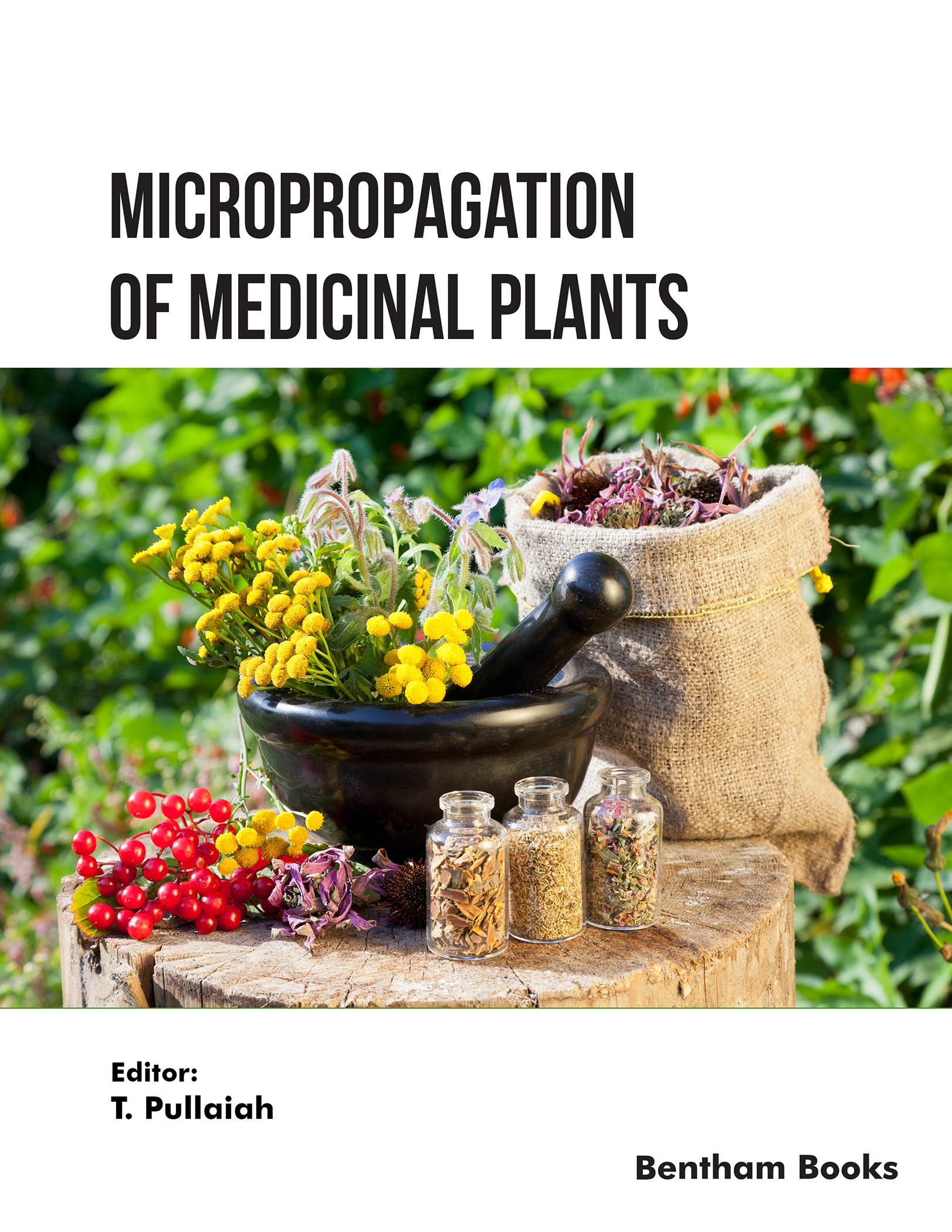Micropropagation and in vitro studies in Alpinia Roxb. (Zingiberaceae)

- Authors: Delna Joseph1, Sinjumol Thomas2, Bince Mani3
-
View Affiliations Hide AffiliationsAffiliations: 1 Department of Botany, St. Thomas College Palai, Kottayam 686574, Affiliated to Mahatma Gandhi University, Kerala, India 2 Department of Botany, Carmel College, (Autonomous), Mala, Thrissur-680732, Affiliated to University of Calicut, Kerala, India 3 Department of Botany, St. Thomas College Palai, Kottayam-686574, Affiliated to Mahatma Gandhi University, Kerala, India
- Source: Micropropagation of Medicinal Plants , pp 41-62
- Publication Date: March 2024
- Language: English
Micropropagation and in vitro studies in Alpinia Roxb. (Zingiberaceae), Page 1 of 1
< Previous page | Next page > /docserver/preview/fulltext/9789815238303/chapter-3-1.gif
A tropical and subtropical Asian genus called Alpinia is used for both horticultural and medicinal purposes. Species having ornamental uses are now distributed widely all over the world. Different species of Alpinia are widely used in traditional medicine for treating many diseases. Several Alpinia species have now been experimentally demonstrated to have medicinal properties. Excess trade of many species of Alpinia, such as A. calcarata, A. galanga etc., as well as habitat loss and urbanization demands its mass propagation. Therefore, one of the best methods for its mass propagation and conservation is micropropagation. In vitro studies of medicinal taxa such as A. calcarata, and A. galanga and ornamental species such as A. purpurata has been well established. Different in vitro approaches such as direct organogenesis, callogenesis and indirect organogenesis, somatic embryogenesis (SEs), and multiplication using inflorescence buds were generally tried for the successful micrpropagation of different species of Alpinia. Genetic and phytochemical fidelities of the in vitro raised plants were also studied in many instances to enhance the commercial use of it.
-
From This Site
/content/books/9789815238303.chapter-3dcterms_subject,pub_keyword-contentType:Journal105

